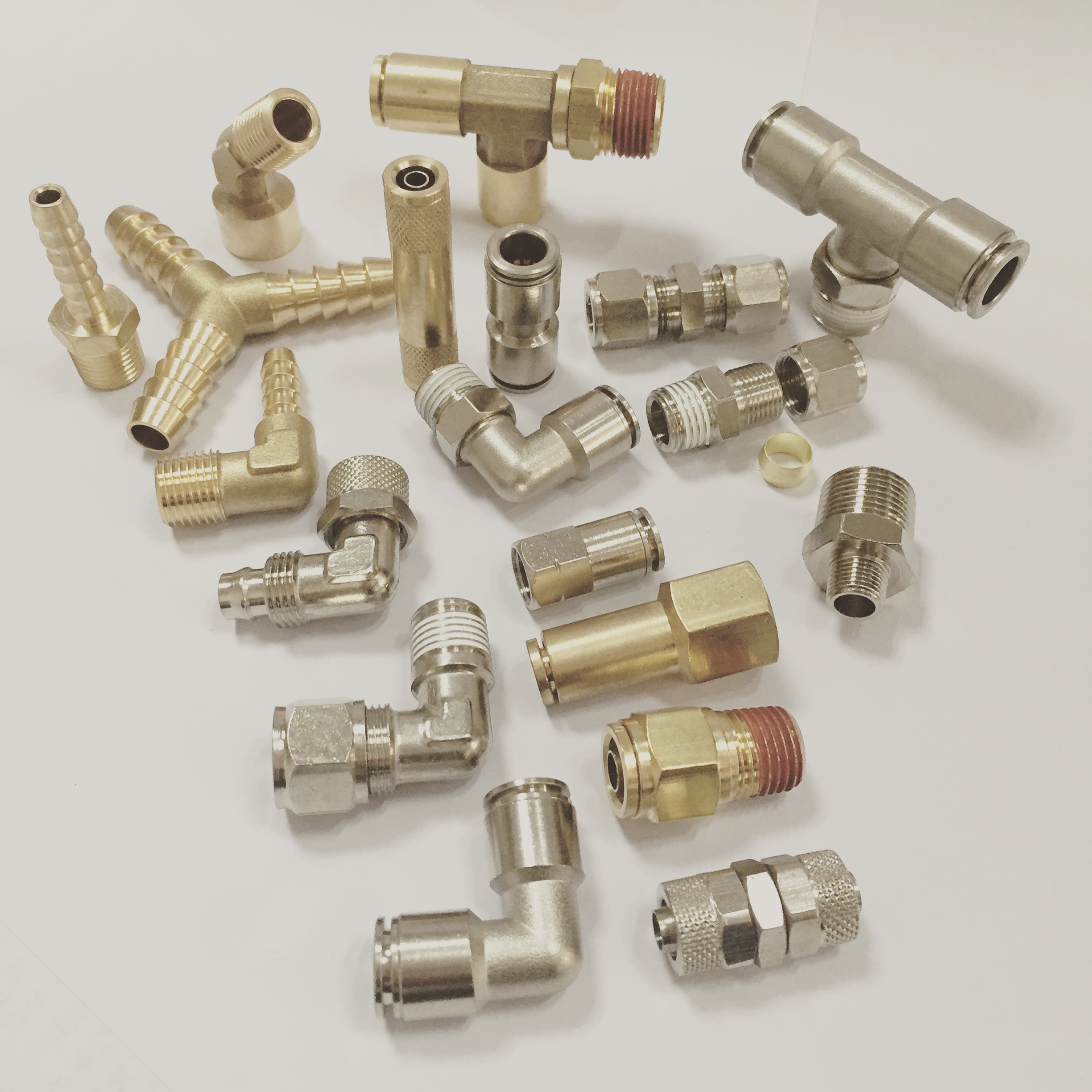Brass push to connect fittings have revolutionized fluid and gas connection systems, offering convenience, reliability, and efficiency. In this comprehensive guide, we’ll delve into the world of brass push to connect fittings, exploring their functionality, advantages, applications, and more.
I. Introduction
Brass push to connect fittings are integral components in various industries, facilitating seamless connections without the need for specialized tools. Their versatility and reliability make them indispensable in pneumatic, hydraulic, and fluid transfer systems.
II. Understanding Push to Connect Fittings
A. Definition and Functionality
Push to connect fittings, including those made of brass, provide quick and secure connections by simply pushing tubing into the fitting. This intuitive design eliminates the need for threading or soldering, ensuring fast installations and leak-free seals.
B. Components of Brass Push to Connect Fittings
- Body: The main housing that houses internal components and provides structural integrity.
- Collet: A gripping mechanism inside the fitting that secures the tubing in place.
- O-ring: A rubber or elastomeric ring that creates a tight seal between the tubing and fitting.
- Thread: External threads for connecting to other components or fixtures.
C. Working Principle
Brass push to connect fittings operate on the principle of compression, where the collet exerts pressure on the tubing, creating a secure and leak-proof connection. This mechanism ensures a reliable seal even under high-pressure conditions.
III. Advantages of Brass Push to Connect Fittings
A. Quick Installation
The push-in design allows for rapid installation without the need for specialized tools, reducing labor costs and downtime during system assembly.
B. No Tools Required
Unlike traditional fittings that require wrenches or soldering equipment, brass push to connect fittings can be installed by hand, saving time and simplifying the installation process.
C. Leak-Free Performance
The compression-based sealing mechanism ensures a tight and reliable seal, minimizing the risk of leaks and ensuring consistent performance over time.
D. Reusability
Brass push to connect fittings can be easily disconnected and reconnected without damaging the tubing or compromising the fitting’s integrity, allowing for system modifications or repairs with minimal effort.
IV. Types of Brass Push to Connect Fittings
A. Straight Connectors
B. Elbow Connectors
C. Tee Connectors
D. Reducer Connectors
E. Union Connectors
Each type serves specific applications and installation requirements, offering flexibility and versatility in system design.
V. Considerations for Selecting Brass Push to Connect Fittings
A. Operating Pressure and Temperature
B. Media Compatibility
C. Tube Size and Material
D. Environmental Factors
Evaluating these factors ensures the proper selection of fittings that meet the specific needs and requirements of the application.
VI. Installation and Maintenance Tips
A. Preparing the Tubing
B. Inserting the Tubing
C. Testing for Leakages
D. Regular Inspection and Maintenance
Proper installation and maintenance practices are essential for maximizing the performance and lifespan of brass push to connect fittings.
VII. Applications of Brass Push to Connect Fittings
A. Pneumatic Systems
B. Hydraulic Systems
C. Water Filtration Systems
D. Refrigeration Systems
The versatility of brass push to connect fittings makes them suitable for a wide range of applications across various industries.
VIII. Common Mistakes to Avoid
A. Incorrect Tubing Preparation
B. Over-tightening the Fittings
C. Improper Installation Techniques
D. Neglecting Regular Maintenance
Awareness of these common pitfalls helps prevent issues and ensures optimal performance of push to connect fittings.
IX. Troubleshooting Guide
A. Leakage Issues
B. Difficulty in Inserting Tubing
C. Tube Slippage
D. Inconsistent Performance
Addressing these common issues promptly helps maintain the integrity and reliability of pneumatic systems.
X. Innovations in Brass Push to Connect Fittings
A. Enhanced Seal Technology
B. Improved Materials
C. Integration with Smart Systems
Advancements in fitting design and materials contribute to enhanced performance and efficiency in modern systems.
XI. Environmental Impact and Sustainability
A. Recycling and Disposal Practices
B. Eco-Friendly Materials
C. Energy Efficiency
Adopting sustainable practices and materials promotes environmental responsibility and reduces the carbon footprint of pneumatic systems.
XII. Future Trends and Developments
A. Industry Adoption and Growth
B. Technological Advancements
C. Market Trends
Anticipating future trends and developments helps stay ahead of the curve and adapt to changing industry needs.
XIII. Conclusion
Brass push to connect fittings offer a versatile, reliable, and efficient solution for fluid and gas connection systems. By understanding their functionality, advantages, and applications, users can make informed decisions to optimize system performance and reliability. Whether in pneumatic, hydraulic, or fluid transfer systems, brass push to connect fittings play a vital role in ensuring seamless operations and enhanced productivity.

